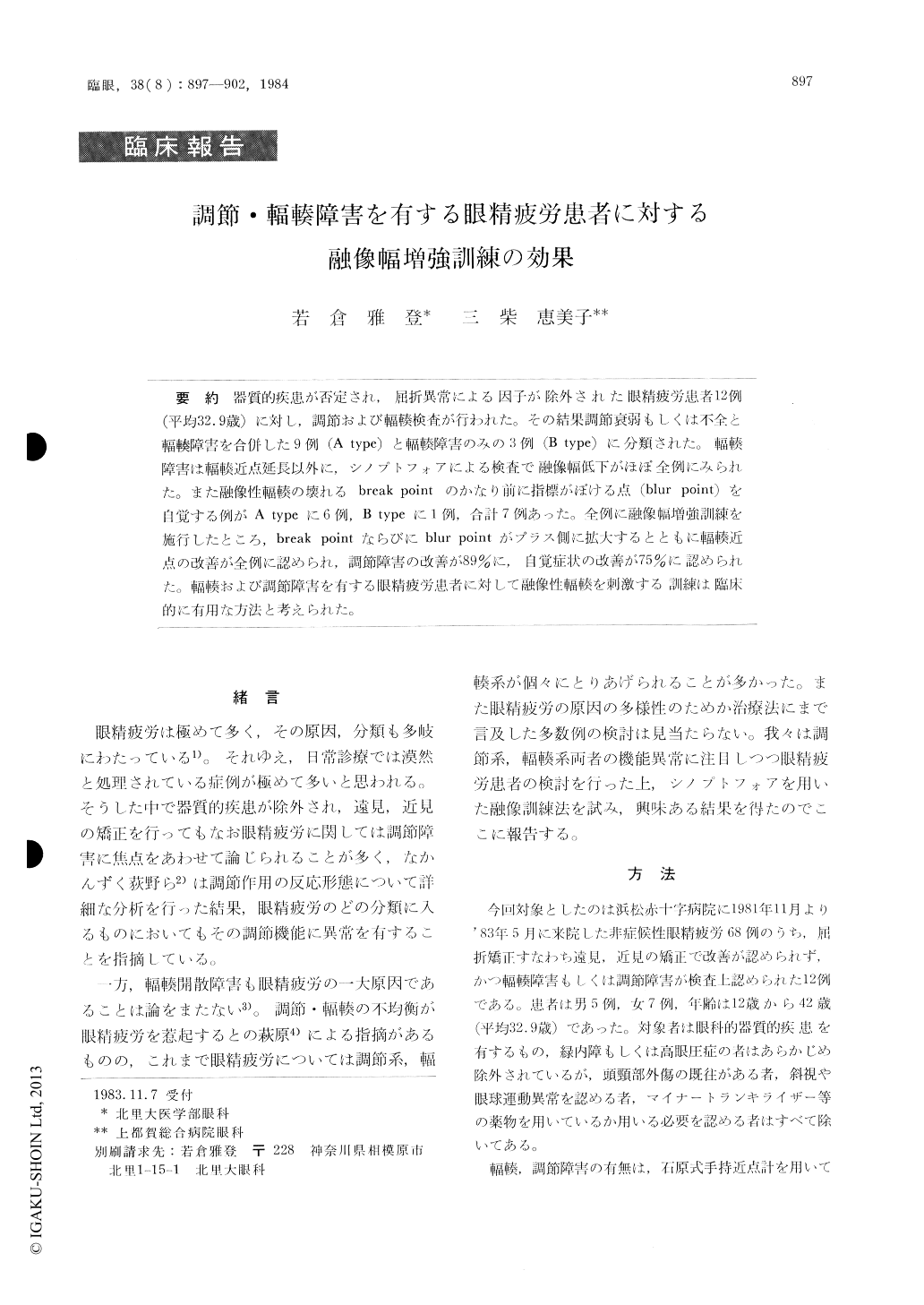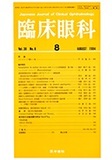Japanese
English
- 有料閲覧
- Abstract 文献概要
- 1ページ目 Look Inside
器質的疾患が否定され,屈折異常による因子が除外された眼精疲労患者12例(平均32.9歳)に対し,調節および輻輳検査が行われた。その結果調節衰弱もしくは不全と輻輳障害を合併した9例(A type)と輻輳障害のみの3例(B type)に分類された。輻輳障害は輻輳近点延長以外に,シノプトフォアによる検査で融像幅低下がほぼ全例にみられた。また融像性輻輳の壊れるbreak pointのかなり前に指標がぼける点(blur point)を自覚する例がA typeに6例,B typeに1例,合計7例あった。全例に融像幅増強訓練を施行したところ,break pointならびにblur pointがプラス側に拡大するとともに輻輳近点の改善が全例に認められ,調節障害の改善が89%に,自覚症状の改善が75%に認められた。輻輳および調節障害を有する眼精疲労患者に対して融像性輻輳を刺激する訓練は臨床的に有用な方法と考えられた。
We evaluated the clinical course of 12 patients with asthenopia with corrected visual acuity of 20/20 and with no apparent organic causative factor. All cases complained of severe eye strain. A prolonged near point of convergence with accommodative impairment was detected in 9 cases. Convergence insufficiency was the sole pathological finding in 3 cases. All cases manifested varying degrees of decrease of fusional convergence. Seven patients attained blur point much earlier to the break-point when the fusional convergence was loaded toward convergence by means of major amblyoscope (synoptophore) device.

Copyright © 1984, Igaku-Shoin Ltd. All rights reserved.


